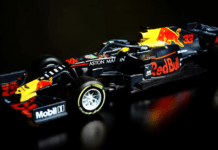In the world of high-speed racing, every minute detail can make or break the performance of a racing car. One such crucial element often overlooked by enthusiasts and spectators is the automotive engine mount. This unassuming component plays a significant role in determining how a racing car handles on the track. In this article, we’ll delve into the intricacies of an automotive engine mount and explore its profound impact on the handling of racing cars.
Understanding Automotive Engine Mounts
Engine mounts are structural components that secure the engine to the chassis of a vehicle. They not only provide support and stability but also serve as a buffer, absorbing the engine’s vibrations and preventing them from transferring to the rest of the vehicle. This isolation of vibrations is crucial for maintaining a comfortable driving experience.
The Role of Engine Mounts in Racing Cars
In the realm of racing, where precision and control are paramount, engine mounts assume an even more critical role. Racing cars operate at extreme speeds, subjecting them to intense vibrations and forces. Engine mounts must strike a delicate balance between providing stability and minimizing vibrations to ensure optimal handling and control for the driver.
Impact on Handling and Performance
The impact of engine mounts on racing car handling cannot be underestimated. A well-designed engine mount can enhance cornering capabilities, reduce body roll, and improve overall stability during high-speed maneuvers. On the flip side, a poorly optimized mount can introduce instability, leading to compromised control and slower lap times.
Types of Engine Mounts
Various types of engine mounts exist, ranging from traditional rubber mounts to advanced hydraulic and electronically controlled mounts. Each type offers a distinct set of benefits and trade-offs. Racing teams often experiment with different mount configurations to fine-tune their car’s handling characteristics.
Considerations in Racing Car Engine Mounts
Engine mount selection is a meticulous process that takes into account factors such as material durability, vibration damping capabilities, and weight distribution. Teams must also consider the track type, weather conditions, and driver preferences when choosing the right engine mounts for a racing car.
Innovations and Future Trends
The automotive industry is a hotbed of innovation, and engine mounts are no exception. Advancements in materials, design, and manufacturing techniques are leading to lighter yet sturdier mounts with enhanced vibration isolation properties. Additionally, the integration of smart technologies allows for real-time adjustment of engine mount characteristics, optimizing performance on the fly.
Maintaining and Upgrading Engine Mounts
Engine mounts, like any other component, require regular maintenance to ensure peak performance. Over time, they can deteriorate due to wear and tear, impacting handling and overall stability. Racing teams invest in proactive maintenance and upgrades to stay competitive on the track.
Case Studies: Racing Teams and Engine Mount Optimization
Several racing teams have gained a competitive edge by focusing on engine mount optimization. Through careful analysis and testing, these teams have fine-tuned their mounts to achieve better handling, reduced lap times, and improved driver comfort. Their success stories underscore the pivotal role of engine mounts in racing performance.
Balancing Power and Vibration Dampening
Racing cars are synonymous with power and speed, but harnessing that power effectively requires meticulous engineering. Engine mounts must strike a delicate balance between supporting the engine’s weight and effectively dampening vibrations. This equilibrium contributes to a smoother and more controlled driving experience.
Collaboration between Engineers and Drivers
Successful racing performance hinges on effective collaboration between engineers and drivers. Feedback from drivers is invaluable in refining engine mount characteristics to match the nuances of different tracks and driving styles. This partnership ensures that the car’s handling characteristics are optimized for peak performance.
The Marriage of Engine Mounts and Suspension Systems
Engine mounts and suspension systems share a symbiotic relationship. The interaction between these two components influences how a racing car responds to varying road conditions and dynamic forces. A well-coordinated setup can result in exceptional handling and improved lap times.
Influence of Engine Mounts on Aerodynamics
Aerodynamics play a crucial role in racing car performance, and engine mounts can indirectly impact aerodynamic efficiency. Vibrations and engine movements can affect the car’s aerodynamic stability, highlighting the need for seamless integration between these elements to achieve a harmonious racing machine.
Engine Mounts: Beyond Performance Enhancement
While engine mounts significantly impact racing car performance, their influence extends beyond the racetrack. The lessons learned from racing applications often find their way into consumer vehicles, enhancing everyday driving experiences with improved comfort and reduced vibrations.
Sources:
Basic information about engine mount – buycarparts.co.uk
About the importance of engine mount maintenance – thedrive.com














